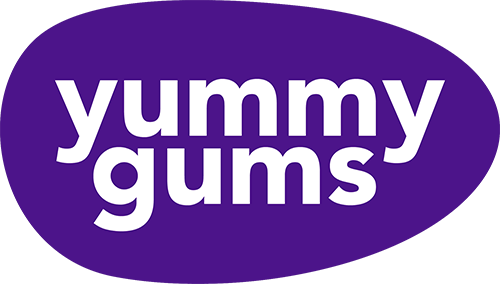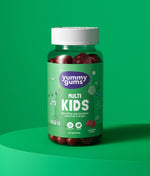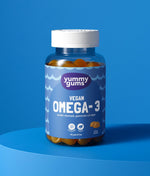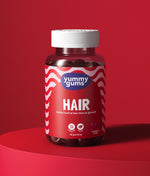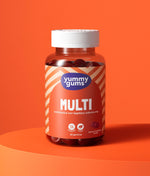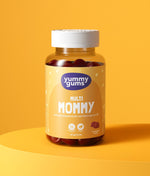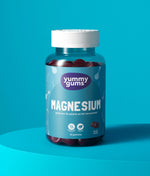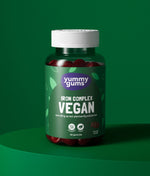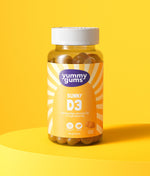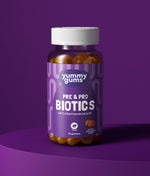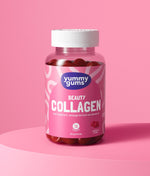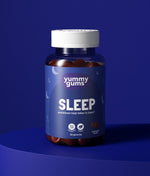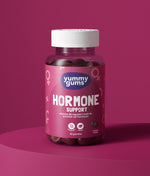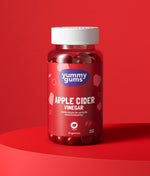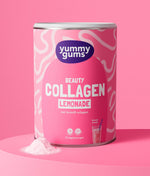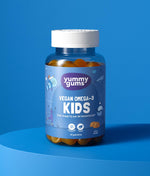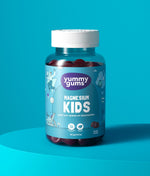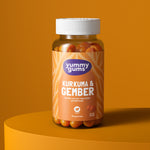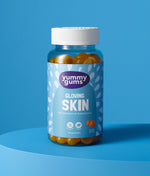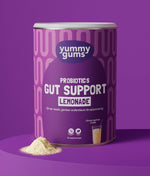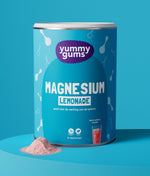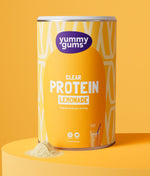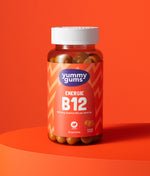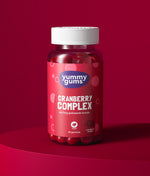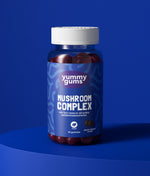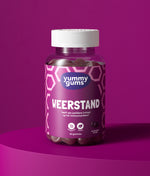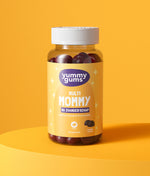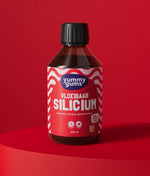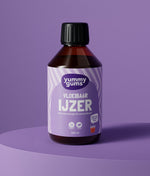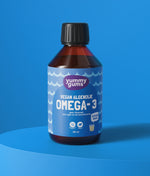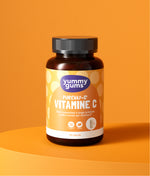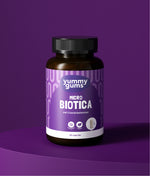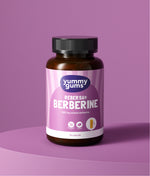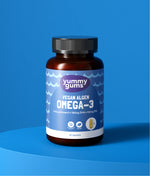Vitamins for children
Vitamines
Table of contents
What are vitamins?Does my child need a (multi)vitamin?
What should I look for when buying vitamins for my child?
Can my child get too many vitamins?
What does '% of RDA' on the jar mean?
Synthetic or natural
Are expensive multivitamins better than cheap ones?
Medical advice
E-numbers and sugar
Vitamins
From which food do we get those vitamins?
Most important vitamins for children
Minerals
Most important minerals for children
Vitamins by age group
Vegetarian diet
Vegan diet
Bibliography
What are vitamins?
Vitamins are micronutrients, or very small nutrients that play a major role in many different processes in your body. Vitamins ensure, for example, that digestion and metabolism function properly. They are micronutrients , and unlike macronutrients, they do not provide your body with energy on their own. However, vitamins do enable you to extract energy from the macronutrients: they function as a catalyst. They support some processes, but are even essential for many others. "Vita" therefore means "life": vitamins are indispensable for many processes.
Along with minerals, including micronutrients, vitamins ensure that all processes in your body run smoothly. There are thirteen different vitamins in total, each with its own function. Your body can produce four of these: vitamins K, D, A, and B3. Your body can produce vitamin K entirely on its own. Your body can also produce vitamin D, but this requires exposure to sunlight. The production of vitamin A and vitamin B3 requires the presence of the amino acids tryptophan or beta-carotene, which your body obtains from food. The vitamins your body can produce on its own—except for vitamin K—are produced in only small quantities. Therefore, dietary supplementation is necessary for both these four vitamins and the other nine.A varied diet is therefore very important and the number one recommendation from the Nutrition Centre. The more different foods you eat, the greater your chances of getting a wide range of vitamins and minerals. The Nutrition Centre knows this is more complicated than it sounds, and has therefore developed the Wheel of Five . This guideline can be used by everyone as a tool to ensure they get enough vitamins, minerals, proteins, carbohydrates, and fats (Nutrition Centre, 2019). During certain phases of life, your body needs more vitamins than usual, such as illness, pregnancy, or when you reach a certain age. Especially during these periods, it is therefore recommended to supplement your vitamin intake with supplements (Editors Health Square, 2018).
* Yummygums Kids is now available in our webshop !
Does my child need a (multi)vitamin?
That's a question many parents ask themselves. And understandably so, because young children, in particular, often eat few vegetables. Fortunately, vitamins are also found in other products, such as fruit, whole-wheat bread, brown rice, milk, and potatoes. Although many children don't eat many vegetables, most still get enough vitamins. From the age of 7, some children quickly get less vitamin A, B1, C, and E, magnesium, potassium, and zinc than recommended. In all cases, it's recommended to give children up to 4 years old 10 micrograms of vitamin D daily in addition to their diet, regardless of whether they eat enough vegetables. Vitamin D drops, pills, or gummies, such as Kids from Yummygums, are sufficient for this. Extra vitamin D supports bone development in young children.
What should I look for when buying vitamins for my child?
It's advisable to critically review the supplement label. Children under 4 need an additional 10 micrograms of vitamin D daily, but not all children's multivitamins contain enough vitamin D. Therefore, you may sometimes need an additional vitamin D supplement in addition to the multivitamin. Yummygums Kids is designed so that the daily dose for children (2 gummies) contains 15 micrograms, ensuring your child gets enough vitamin D. An additional vitamin D supplement isn't necessary in this case.
By law, vitamin supplement packaging must state the exact vitamin content. However, the label must also indicate the percentage of the recommended daily allowance ( RDA ) for adults, even though adults need approximately twice as many vitamins as children. Interpreting the vitamin content is therefore difficult, as it isn't tailored to children's vitamin needs. Therefore, when choosing a multivitamin for children, choose a supplement that contains no more than 50 percent of the RDA.
Yummygums Kids are easy to dose for both children and their parents: children can take two gummies a day, parents four. There's no need to worry about too much vitamin D, as a large dose of this vitamin is fortunately harmless. Unfortunately, this doesn't apply to all vitamins: more than 200 micrograms (for children aged 3) or 350 micrograms (for children aged 4 to 8) of synthetic folic acid can lead to health problems. Yummygums Kids contain 200 micrograms of folic acid per 4 gummies. Check the label before purchasing a supplement, and pay particular attention to the amount of vitamin A and folic acid (Consumentenbond, 2019).
Can my child get too many vitamins?
Taking more supplements than the manufacturer recommends, or eating many products with added vitamins alongside the supplement, can result in an overdose. Many foods formulated for children are now supplemented with added vitamins. Therefore, follow the recommendations on the packaging and check the label when purchasing a supplement. Yummygums jars have a safety cap to prevent young children from having unhindered access to the vitamin supplements.

What does '% of RDA' on the jar mean?
The abbreviation " ADH " stands for recommended daily allowance. According to the Health Council, this is the optimal daily intake of vitamins and minerals. Sometimes the label will also include RI , which stands for Reference Intake. ADH and RI mean the same thing: they indicate how much of a vitamin the supplement contains compared to the guideline. Because age, sex, and specific situations can lead to different vitamin needs, each category has its own RDA. On the Vitamin Info website , you can find the exact amounts you and your child need. Vitamin Info bases its information on the Health Council's guidelines.
Synthetic or natural
You may have heard that there's a difference between the natural and synthetic versions of a vitamin or mineral. In the case of minerals, the main difference between these two forms is that the natural form actually occurs in nature. This can be in an animal, plant, or mineral form. When a substance is replicated in a laboratory, it's a synthetic substance. In some cases, the synthetic version is exactly the same as the natural one, and your body doesn't "detect" the difference because the versions are identical. Because not all manufacturers use the same substances in their production process, there is often a difference between various vitamin supplements (Gezondheidsplein, 2019).
In most cases, there's no difference in absorption between natural and synthetic vitamins. Vitamins D, B5, B6, folic acid (B11), and B12 are exceptions. It's known that the synthetic form of these vitamins is better absorbed. The opposite is true for vitamin E: the natural form is better absorbed by the body (Consumentenbond, 2019).
Are expensive multivitamins better than cheap ones?
If you look purely at the quality of the vitamins in a supplement, there's no difference between expensive and cheap supplements. To your body, a vitamin D molecule is simply a vitamin D molecule, regardless of how much you paid for it. Where supplements do differ is in the use of different raw materials or additives in the production process. Furthermore, premium brands often offer a larger—and therefore more specific—range than store brands.
Medical advice
Whether your child is healthy depends on numerous factors. Fortunately, there are several components that can provide an indication. Is your child getting enough vitamins and minerals, is your child getting enough exercise , and does your child have a healthy BMI ? On the other hand, if one of these factors is suboptimal, it doesn't mean your child is unhealthy, but according to the Dutch Centre for Youth Health, it's advisable not to let your child deviate too far from the average. Providing your child with a healthy diet and an active lifestyle will benefit them later in life. When children eat healthily from a young age and get all the vitamins and minerals they need, they're more likely to maintain this for the rest of their lives.
E-numbers and sugar
Although the image of E numbers has taken a hit in recent years, E numbers are safe. If they weren't safe, they wouldn't be approved by the European Food Safety Authority (EFSA). An E number is essentially nothing more than an approved substance assigned a code to shorten ingredient lists. This can be a safe synthetic substance or a natural substance. For example, completely natural ingredients like citric acid or turmeric can also be "hidden" under an E number.
Vitamins
If children eat a healthy and varied diet, they get all the vitamins and minerals they need. Supplements are generally unnecessary, with the exception of children with dark skin, children who don't get enough outdoor time, or children under four. For these children, the recommended daily supplementation is 10 micrograms of vitamin D. The Nutrition Centre also recommends a vitamin K supplementation of 150 micrograms for babies aged 0 to 3 months.Below you'll find a chart with all the vitamins children aged 0 months to 18 years need. This is a brief overview; the most essential vitamins for children will be explained in more detail later on this page.
These are the recommended daily amounts:
| Vitamins | 0 to 5 months | 6 to 11 months | 1 to 3 years | 4 to 8 years | 9 to 13 years | 14 to 18 years |
| A | – | 300 mcg | 300/350* 3 mcg | 350/400* 4 mcg RE | 600 mcg | 700/900* 6 mcg RE |
| B1 | 0.2 mg | 0.2 mg | 0.3 mg | 0.5 mg | 0.8 mg | 1.1 mg |
| B2 | 0.4 mg | 0.4 mg | 0.5 mg | 0.7 mg | 1.0 mg | 1.1/1.5* 6 mg |
| B3 | 2* 1 mg | 2 mg | 4 mg NE | 7 mg | 11 mg | 13/17* 6 mg NE |
| B5 | 2 mg | 2 mg | 2 mg | 3 mg | 4 mg | 5 mg |
| B6 | 0.12-0.20* 2 mg | 0.2 mg | 0.4 mg | 0.7 mg | 1.1 mg | 1.5 mg |
| B8 | 5 mcg | 6 mcg | 20 mcg | 25 mcg | 25/35* 5 mcg | 35 mcg |
| B11 | 50 mcg | 60 mcg | 85 mcg | 150 mcg | 225 mcg | 300 mcg |
| B12 | 0.4 mcg | 0.5 mcg | 0.7 mcg | 1.3 mcg | 2.0 mcg | 2.8 mcg |
| C | – | 20 mg | 25/30* 3 mg | 30/40* 4 mg | 50 mg | 75 mg |
| D | 10 mcg | 10 mcg | 10 mcg | 10 mg | 10 mcg | 10 mcg |
| E | – | 3 αTE | 4/5* 3 αTE | 5/6* 4 αTE | 7/8* 6 αTE | 8/10* 6 αTE |
| K | 150 mcg | – | 30 mcg | 55 mcg | 60 mcg | 75 mcg |
The units are given in milligrams (mg) or micrograms (mcg), RE = retinol units, NE = nicotinic acid equivalents, αTE = alpha tocopherol units.
*1 Assuming full breastfeeding.
*2 With exclusive breastfeeding 0.12 mg, with bottle feeding (due to higher protein content) 0.20 mg.
*3 1st quantity applies for 1 to 2 years, 2nd for 3 years.
*4 1st quantity applies to 4 to 5 years, 2nd for 6 to 8 years.
*5 1st quantity applies to 9 to 10 years, 2nd for 11 to 13 years.
*6 1st quantity applies to girls, 2nd to boys.
(Vitamin Info, 2019)
From which food do we get those vitamins?
Below, we briefly explain which foods contain the most important vitamins for children. For a more detailed overview of vitamins and their precise locations, please refer to the Nutrition Facts Table. and the Yummygums Vitamin Library.Most important vitamins for children
The most important vitamins for children are explained in more detail below.
Vitamin A
Vitamin A is important for growth, healthy skin, hair, nails, eyes, and the immune system . This vitamin is found in animal products, such as meat (and meat products) and especially liver. Fruits and vegetables contain beta-carotene, which your body can convert into vitamin A. Don't give your child too much vitamin A, as it can be harmful. Read more here .
Vitamin B6
Vitamin B6 promotes the production of white blood cells and keeps the lymph nodes, where white blood cells are produced, healthy. This vitamin is found in meat, fish, nuts, bread, grain products, legumes, vegetables, and dairy products.
Vitamin C
This vitamin protects the body's cells. Vitamin C is also necessary for the formation of connective tissue, the absorption of iron, and it boosts your immune system. It's also an antioxidant that helps protect tissue from damage. Potatoes, vegetables, and fruit contain plenty of vitamin C.
Vitamin D
Vitamin D is necessary for the growth and development of your child's bones and teeth . Vitamin D also plays a role in muscle function, the immune system, and calcium absorption. Vitamin D is mainly found in oily fish, low-fat butter, and margarine.
Vitamin E
Vitamin E protects the walls of cells, blood vessels, organs, eyes, and tissues from damage. Vitamin E is found in sunflower oil, low-fat butter, margarine, bread, grain products, nuts, seeds, and fruit.
Minerals
Below you'll find a chart with the recommended daily allowance (RDA) of minerals children aged 6 months to 18 years need. The most essential minerals for children are explained further below the overview.
| Minerals | 6 to 11 months | 1 to 2 years | 3 years | 4 to 8 years | 9 to 13 years | 14 to 18 years |
| Calcium | 450 mg | 500 mg | 500 mg | 700 mg | 1100/1200* 3 mg | 1100/1200* 3 mg |
| Chloride | – | 1.5 g | 1.5 g | 1.9 g | 2.3 g | 2.3 g |
| Chrome | 5.5 mcg | 11 mcg | 11 mcg | 15 mcg | * 4 | 24/35* 3 mcg |
| Fluoride | 0.4 mg | 0.6 mg | 0.6 mg | * 2 | 1.5/1.4* 3 mg | 2.9/3.2* 3 * 6 mg |
| Phosphorus | 420 mg/kg | 470 mg | 470 mg | 470 mg | 700 mg | 700 mg |
| Iron | 8 mg | 8 mg | 8 mg | 8 mg | 11 mg | 15/11* 3 mg |
| Iodine | 50 mg | 70 mcg | 90 mcg | 90 mcg | 150 mcg | 150 mcg |
| Potassium | 1100 mg | 1400 mg | 1800 mg | 1800 mg | 2900/3300* 3 mg | 3100/3500* 3 mg |
| Copper | 0.3 mg | 0.3 mg | 0.4 mg | 0.4 mg | 0.7 mg | 0.9 mg |
| Magnesium | 80 mg | 85 mg | 120 mg | 120/200* 1 mg | 280 mg | 280/350* 3 mg |
| Manganese | 0.2/0.5 mg | 0.5 mg | 0.5 mg | 1.0 mg | * 5 | 3.0* 6 mg |
| Molybdenum | 10 mcg | 15 mcg | 15 mcg | 15/20* 1 mcg | * 6 | 65* 6 mcg |
| Sodium | 0.4 g | 1.2 g | 1.2 g | * 7 | * 7 | * 7 |
| Selenium | 50 mcg | 20 mcg | 25 mcg | 25 mcg | 40 mcg | 50/60* 3 mcg |
| Zinc | 5 mg | 5 mg | 6 mg | 6 mg | 8/11* 3 mg | 9/12* 3 mg |
The units are expressed as milligrams (mg), micrograms (mcg), or milligrams per kilogram of body weight (mg/kg). Children aged 0 to 5 months only need 210 mg of calcium and 0.2 mcg of chromium.
*1 1st quantity applies to ages 4 to 5, second quantity applies to ages 6 to 8.
*2 Girls 4 to 6 years 0.9 mg 7 to 10 years 1.4 mg. Boys 4 to 6 years 1.0 mg 7 to 10 years 1.5 mg.
*3 1st quantity applies to girls, 2nd quantity applies to boys.
*4 Girls 21 mcg. Boys 9 to 10 years 25 mcg, 11 to 13 years 35 mcg.
*5 Girls and boys 9 to 10 years 1.5 mg, 11 to 13 years 2.0 mg
*6 Girls and boys 9 to 10 years 30 mcg, 11 to 13 years 45 mcg.
*6 Applies to ages 15 to 17.
*7 For sodium, the amount is 1.6 g for 4 to 6 years, 2 g for 7 to 10 years and 2.4 g for 10 to 18 years.
(Vitamin Info, 2019, Nutrition Center, 2019)
The Netherlands Nutrition Centre indicates that there is also a maximum amount of chloride intake. This is called the tolerable upper limit . For children aged 1 to 3 years, this is 1.8 g, for those aged 4 to 8 years, it is 2.7 g, and for those aged 9 and over, it is 3.6 g (Netherlands Nutrition Centre, 2019).
Most important minerals for children
The most important minerals for children are explained below.
Iron
Iron's primary function is to transport oxygen throughout the body and support brain development. People who don't get enough iron often feel faint or dizzy when they stand up. If you experience these symptoms, there's a good chance you have anemia (an iron deficiency). Children use a lot of iron as they grow, but they also get enough if they eat a varied diet. If you notice your child is becoming less active or grabbing their head when they stand up, visit their doctor. A simple finger prick can check their iron levels. Iron levels are called Hb, which stands for hemoglobin. You can support your child's iron absorption by giving them a vitamin C-rich product with every meal, such as fruits and vegetables or orange, pineapple, grapefruit, or tomato juice. This helps the body absorb iron better (Oei, ik groei, 2019).
Sodium
Almost all foods contain sodium. Our main source of sodium is table salt, which is 40 percent sodium. Your body needs sodium to regulate fluid balance and to control muscles and nerves. Only a small amount of sodium is needed for this, much less than the average Dutch person consumes . This is because many products have (added) salt. Therefore, be careful with your salt consumption, as too much salt can lead to high blood pressure. And high blood pressure increases the risk of cardiovascular disease (Nutrition Center, 2019).
Calcium
Many people know calcium as "lime." Calcium is essential for healthy bones, among other things. Dairy products are the main sources of calcium, but it's also found in vegetables, nuts, and legumes . Previously, it wasn't possible to get enough calcium without these products, but nowadays , plant-based dairy products are also sufficient : calcium is added to them.
Vitamins by age group
You just read that a baby needs fewer vitamins and minerals than an eight-year-old. So here are some helpful tips about vitamins by age group.
Baby (0 – 12 months)
In the first few months, your baby will be satisfied with breast milk or formula . These contain almost all the nutrients your baby needs: you only need to supplement with vitamin D and K. Once your baby is one week old, you can give them an extra 10 micrograms of vitamin D daily. Continue this until your child is four years old , as they cannot yet get enough vitamin D from food or sunlight. Vitamin K is important for blood clotting and possibly also for bone formation. A vitamin K deficiency can cause bleeding. Babies are usually given extra vitamin K immediately after birth because they may have developed a deficiency during pregnancy when, for example, vitamin K cannot reach the baby through the placenta. Furthermore, babies do not yet have enough gut bacteria to produce vitamin K themselves. If your baby is breastfed or drinks less than 500 milliliters of formula per day, they will receive 150 micrograms of vitamin K daily from day one up to and including three months.
Toddlers (1 – 3 years)
Children this age can sometimes be picky eaters. Toddlers, in particular, can be a mess: they eat little vegetables, fruit, or fish, and don't get enough fat. Fortunately, you now have an idea of which foods are rich in vitamins and minerals. Iron, vitamin D, and omega-3 fatty acids ( DHA ) are particularly important nutrients for toddlers. If you need some inspiration, you can check out the toddler meal plans at Voedingscentrum.nl. They make it easier to plan meals for an entire day.
Children (4 – 13 years)
Children don't need the same amount of every vitamin, and it can be difficult to estimate how much they're getting. If you want to be sure your child is getting enough vitamins and minerals, try these sample menus from the Netherlands Nutrition Centre. Talk to other parents and compare what you give your children to eat and drink.
Vegetarian diet
If you choose not to serve meat or fish, it's wise to pay attention to your child's iron intake. Provide plenty of whole grains, legumes, nuts, and eggs. And choose apple butter with added iron. Vitamin C promotes the absorption of iron from food, so some fruit and/or vegetables with breakfast or lunch is recommended. This also applies to non-vegetarian children. Preferably buy meat substitutes with added iron and preferably vitamin B12, or take a supplement.
Vegan diet
If you're following a vegan diet (without animal products), it's a good idea to consult a dietitian. If you don't pay enough attention to a healthy balance of nutrients while following a vegan lifestyle, you're more likely to develop deficiencies. Working with a dietitian can help ensure your child gets everything they need (Ouders van nu, 2019).
For more information about vitamin and mineral sources and their contribution to the recommended daily allowance (RDA), please visit the Vitamin Information Bureau's "What's in it?" page. This Vitamin Information Bureau page also provides information about the consequences of consuming too much or too little vitamin and mineral. The Netherlands Nutrition Centre also has more information about vitamins and minerals.